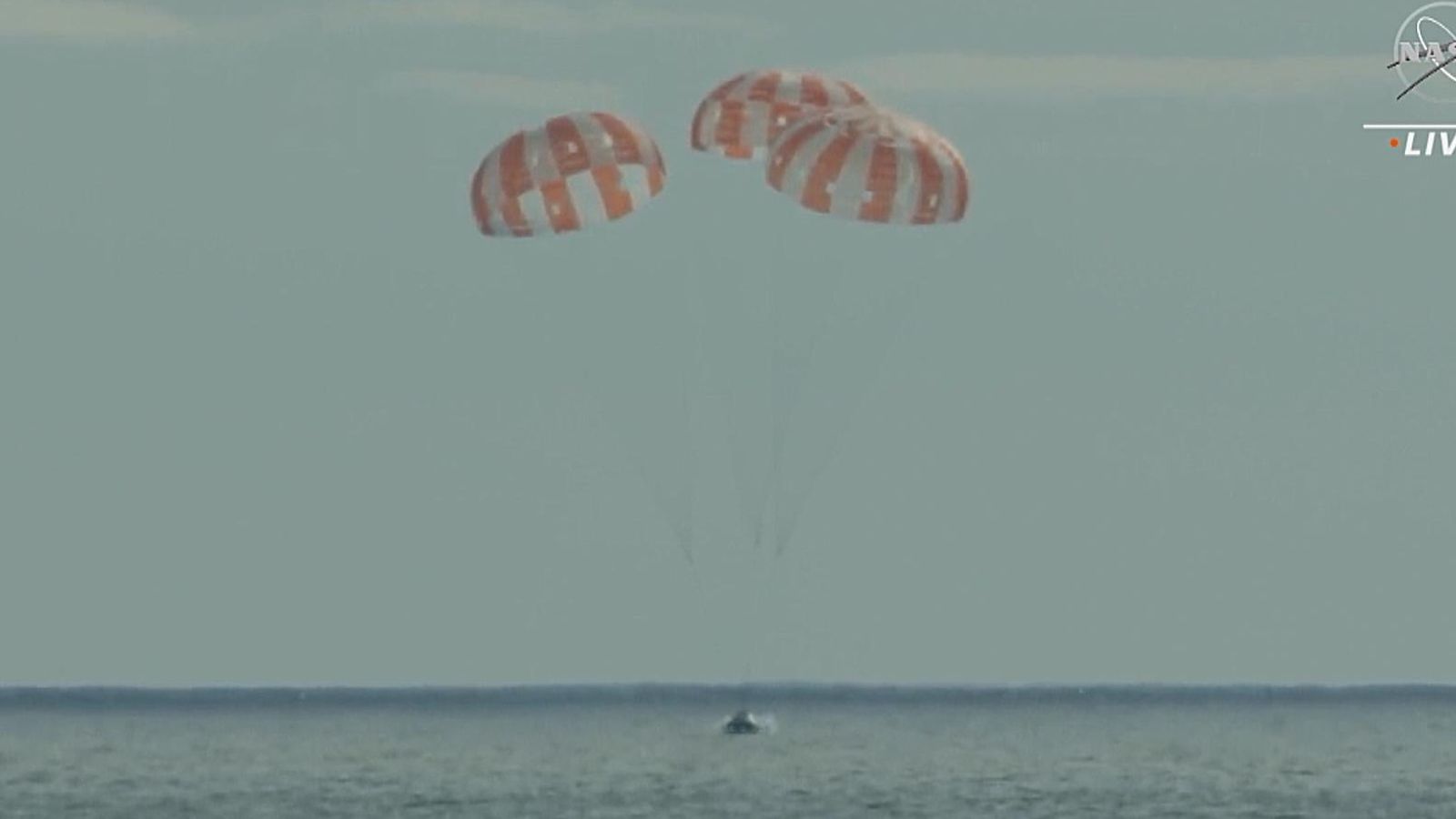NASA’s Orion spacecraft has successfully splashed down into the Pacific Ocean after a 25-day mission to the moon.
The uncrewed capsule, which is designed to carry astronauts, landed near Guadalupe Island shortly after 5.40pm UK time.
The spacecraft hurtled towards Earth at 25,000mph. It was slowed to around 325mph after entering the atmosphere, before deploying 11 parachutes to slow down to under 20mph.
The capsule blasted off from Earth on November 16 on NASA’s Space Launch System (SLS) rocket as part of the Artemis-1 mission, ushering in a new era of lunar exploration that could see humans return to the moon.
Nine days later, it made history by travelling 270,000 miles beyond the Earth – the furthest any spacecraft designed to carry humans has gone.
It has now notched up more than 1.4 million miles.
Shaun the Sheep’s space journey
There may be no humans on this mission, but returning from the long-haul journey are woolly spacefarers Snoopy and Shaun the Sheep, alongside three mannequin astronauts – dubbed Commander Moonikin Campos, Helga, and Zohar.
Recovery teams will pull the capsule from the ocean.
Read more:
The $93bn space mission
Why we haven’t met intelligent life yet – according to Nasa
‘Planet killer’ asteroid found hiding in sun’s glare
While the Artemis-1 mission has been all about testing systems, the Artemis II flight test will be NASA’s first mission with astronauts who will fly around the moon.
If successful, Artemis II will pave the way to land the first woman and next man on the moon as part of Artemis III.
The last manned mission to the moon was Apollo 17 in December 1972.
The Artemis missions are part of NASA’s long-term plans to build a space station – called Lunar Gateway – where astronauts will be able to live and work.








